There are very few shows that generate such high levels of anticipation as Harry Potter and the Cursed Child, but this epic piece of theatre not only meets expectations, it exceeds them, weaving a magical spell that keeps you transfixed for every second of the five-and-a-half hour, two-part play. I admit to being a Harry Potter fan, but as the final curtain approached I simply didn’t want it to end.
So what do you get if you put J.K. Rowling’s phenomenally successful wizarding world on the boards? A series of book by book stage adaptations to follow in the wake of the films? A musical (which some people at last night’s Melbourne opening had been expecting)? Both ideas, among umpteen others, were suggested to Rowling but none got the tick of approval.
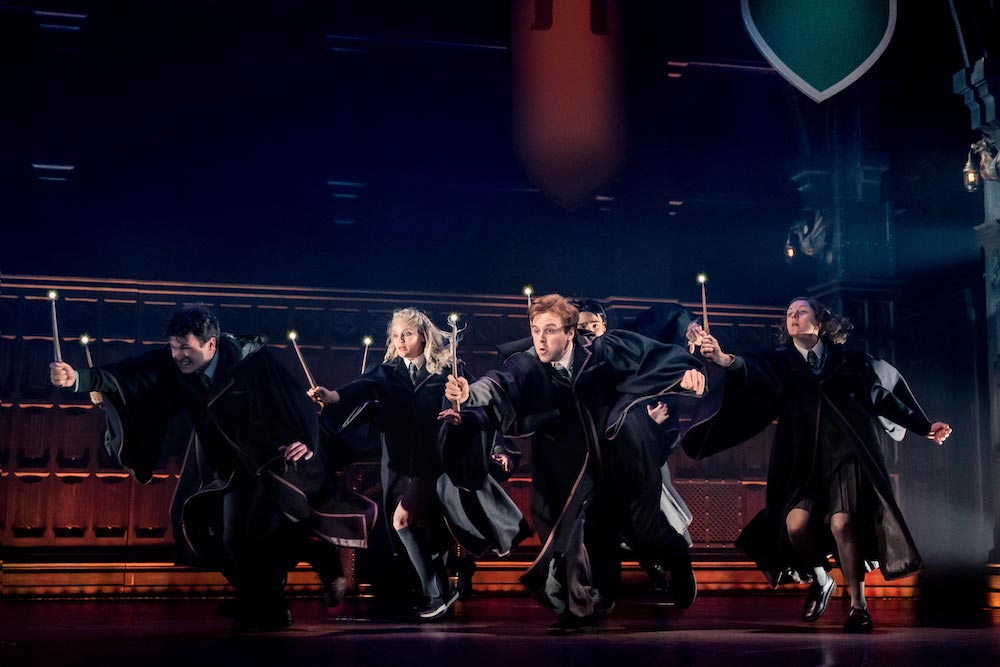 The Australian company of Harry Potter and the Cursed Child. Photo © Matt Murphy
The Australian company of Harry Potter and the Cursed Child. Photo © Matt Murphy
Instead, in manna from heaven for Potter fans, Harry Potter and the Cursed Child tells a brand new story. Written by Jack Thorne, based on an original tale by Rowling herself, Thorne and John Tiffany, who directs, it was first published as a play script. Then Sonia Friedman Productions, Colin Callender and Harry Potter Theatrical Productions presented the world premiere in London’s West End in 2016 where the show won a record-breaking nine Olivier Awards. In 2018, it opened on Broadway where it took home six Tony Awards.
The Melbourne production (with Michael Cassel as the Executive Producer for Australia) is only the third in the world and looks set to run for years at the specially refurbished Princess Theatre where there are new seats, a new carpet with an ‘H’ monogram, and new dark-themed decor, some of which is integrated into the production.
The story is complex, intricately plotted and incredibly clever in that it takes us into new territory and yet incorporates some of the beloved characters and key plot points from the novels. Not that much of it can be revealed. With producers asking patrons to #KeepTheSecrets, reviewers can only hint at what audiences must discover for themselves.
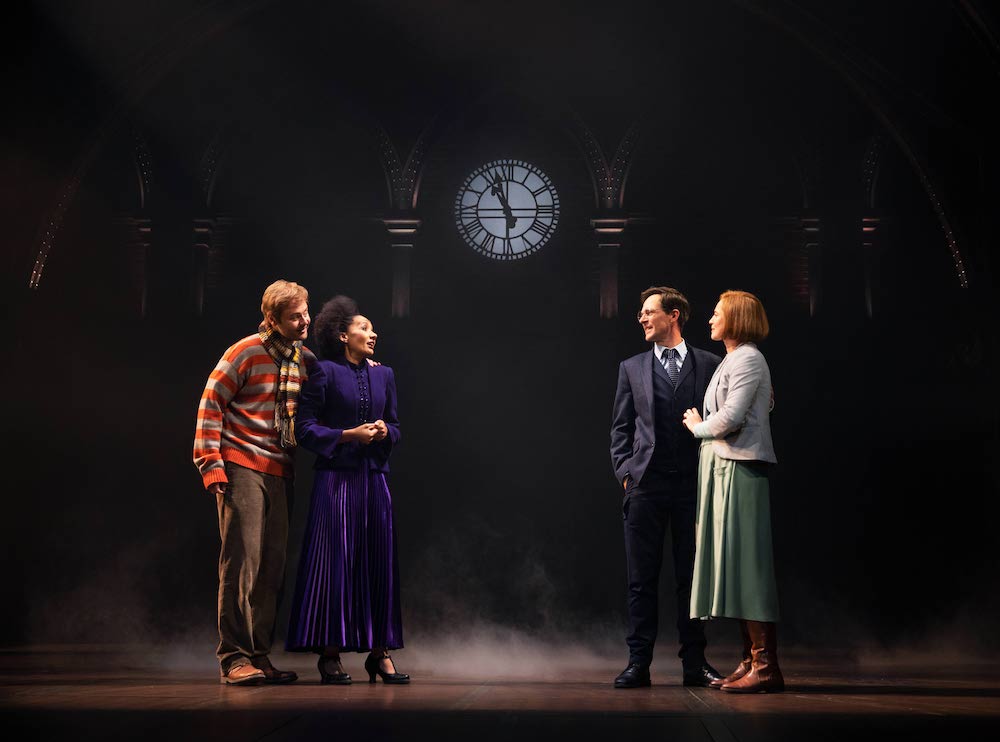 Gyton Grantley, Paula Arundell, Gareth Reeves and Lucy Goleby in Harry Potter and the Cursed Child. Photo © Matt Murphy
Gyton Grantley, Paula Arundell, Gareth Reeves and Lucy Goleby in Harry Potter and the Cursed Child. Photo © Matt Murphy
It begins 19 years after the end of Harry Potter and the Deathly Hallows. Harry, who is now 37 and married to Ginny Weasley, is Head of Magical Law Enforcement, working for Hermione Granger, who is the Minister of Magic. Ginny edits the sports pages of the Daily Prophet. We meet them on platform 9 and 3/4 as they await the Hogwarts Express. Their second son Albus Severus (named after Albus Dumbledore and Severus Snape) is joining his brother James at Hogwarts School of Witchcraft and Wizardry. But Albus is a very different kettle of fish to the confident, relaxed James. Uptight and anxious about being the son of The Boy Who Lived, Albus is scared that he won’t live up to his father’s reputation.
Hermione Granger and Ron Weasley, who are also married, are there with their daughter Rose Granger-Weasley – who clearly takes after her super-smart mother and is also joining the first year Hogwarts’ students. Boarding the train, they discover Scorpius Malfoy, son of Harry’s nemesis, the Death-Eater, Draco Malfoy. None of the students, Rose in particular, want anything to do with Scorpius, but Albus immediately warms to his goofy, awkward sense of humour, not to mention the lure of his sweets. Ignoring Rose, he decides to stay in the carriage with Scorpius, and an unlikely friendship is born.
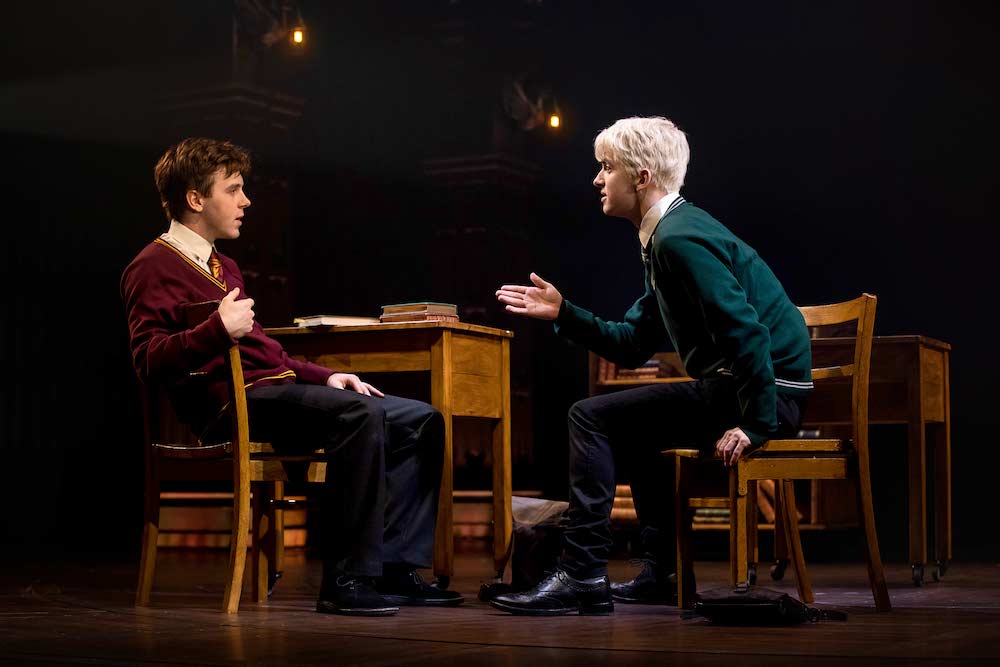 Sean Rees-Wemyss and William McKenna in Harry Potter and the Cursed Child. Photo © Matt Murphy
Sean Rees-Wemyss and William McKenna in Harry Potter and the Cursed Child. Photo © Matt Murphy
At the heart of the story are relationships between parents and children. Harry who never had a father of his own, and a complicated relationship with Professor Dumbledore, is lost when trying to deal with the unhappy Albus, and his attempts at father-son conversation only seem to make things worse. Draco is also struggling to connect with a son he doesn’t understand. The play also explores time-honoured themes such as history repeating itself, friendship, trust, loyalty and power.
The staging is a breath-taking fusion of wonderful, human story-telling combined with jaw-dropping magical effects. The lovely thing about the magic is that it uses good old-fashioned theatrical tricks. You sort of know how a lot of it must be done, but still shake your head at the dexterity and artful precision with which it’s achieved. From transformation, to flying, to wand duels, to smoke shooting out of a pair of ears, to arriving by Floo, the effects are stunning; some which can’t be named are mind-blowing. Part One ends on a shocking cliff-hanger with some astonishing stagecraft and the words “To be continued….” flashed onto the curtain. If anything, Part Two is even better as the dramatic stakes in the time-shifting story become ever more intense.
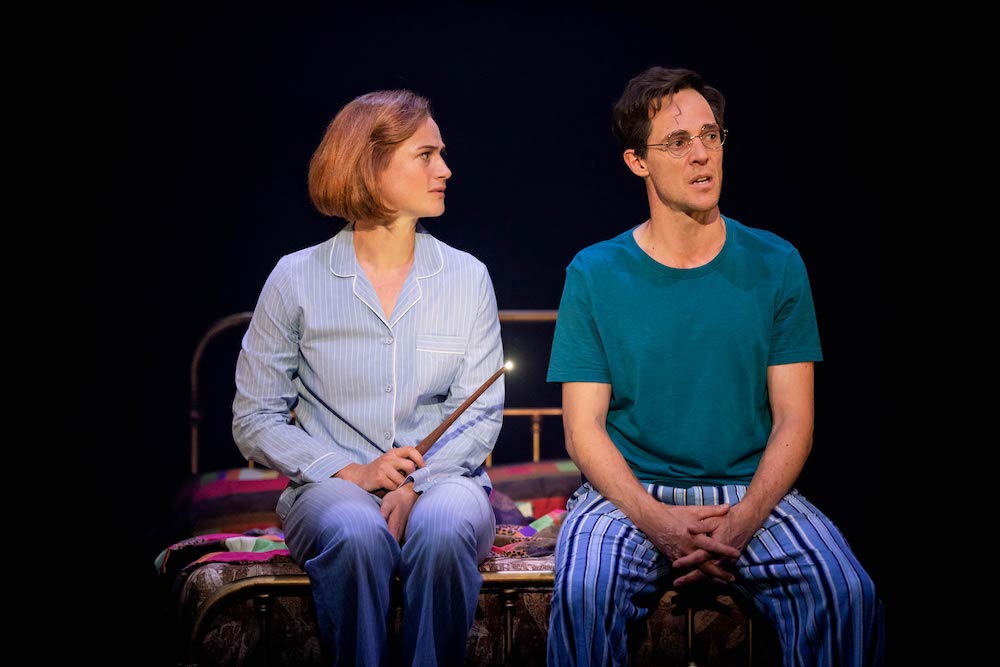 Lucy Goleby and Gareth Reeves in Harry Potter and the Cursed Child. Photo © Matt Murphy
Lucy Goleby and Gareth Reeves in Harry Potter and the Cursed Child. Photo © Matt Murphy
John Tiffany does a fabulous job as director, keeping the action flowing seamlessly and the dramatic tension tight. Set designer Christine Jones has created an imposing, dark space with a vaulted ceiling within which chairs, mobile sets of stairs, books, doors and suitcases feature prominently to stage different scenes. The actors often move the props quickly, their swirling cloaks cleverly used to disguise what is happening. Katrina Lindsay’s costuming is excellent from the almost militaristic yet elegant black suit and slick white-blonde hair style for Draco to the casual, scruffy wear for Ron to Hermione’ purple outfit to the student’s uniforms. Steven Hoggett’s dynamic, inventive movement is another integral element in setting the mood of different scenes, while Neil Austin’s lighting design is crucial both in creating atmosphere and in helping with the illusions and magic (created by Jamie Harrison). Imogen Heap’s music is also very effective.
Tiffany has gathered a cast that could hardly be better. New Zealand actor Gareth Reeves captures Harry’s conflicted nature brilliantly – his decency, his courage but also his frustration and temper when trying to deal with Albus, not to mention his nightmares as his scar begins to hurt again, and his struggle to come to terms with his own past. It’s a very moving performance.
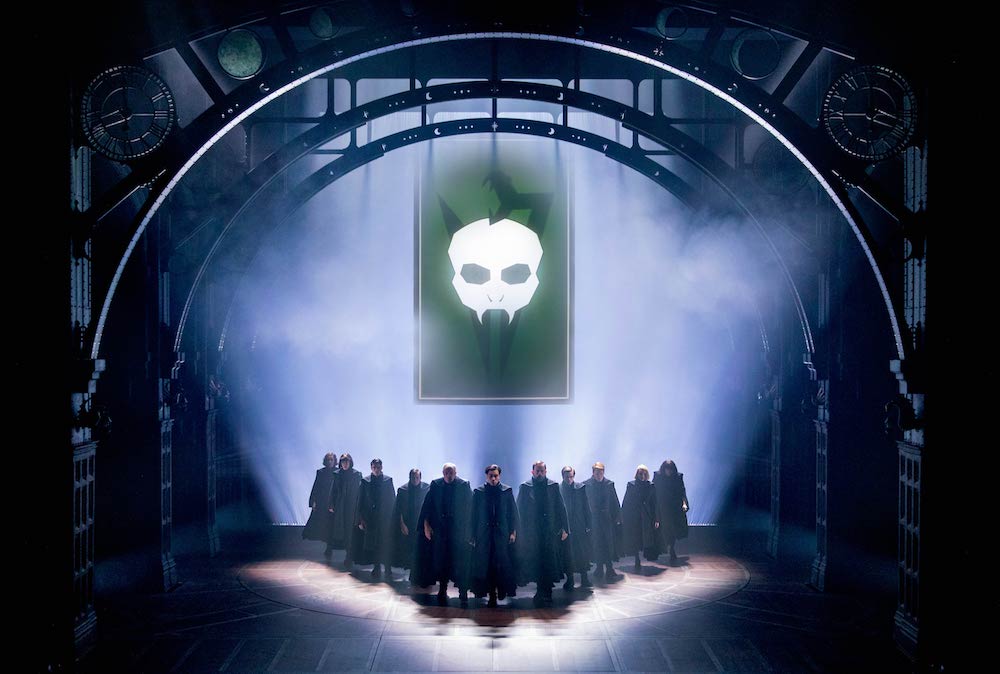 The Australian company of Harry Potter and the Cursed Child. Photo © Matt Murphy
The Australian company of Harry Potter and the Cursed Child. Photo © Matt Murphy
William McKenna, who is making his professional stage debut as Scorpius, is definitely one to watch. He gives an incredibly endearing performance, capturing Scorpius’s awkwardness and his warm sense of humour. He is extremely funny and he and Sean Rees-Weymss – who gives an impressive performance as the troubled Albus – forge a highly believable, touching friendship.
But there are excellent performances across the board, from Paula Arundel as the highly intelligent, sharp-shooting, loyal Hermione, Gyton Grantley as the joke-loving Ron, who can always be counted on to provide welcome humour in dark moments, and Lucy Goleby as the (almost always) patient, supportive Ginny. Draco Malfoy has been given a surprising amount of empathy as a character and Tom Wren gives a richly nuanced performance, suggesting something surprising beneath the chilly exterior. There are also terrific performances from Madeleine Jones in a key role, Gillian Cosgriff, Soren Jensen, Hannah Waterman and George Henare among others. The ensemble also fires.
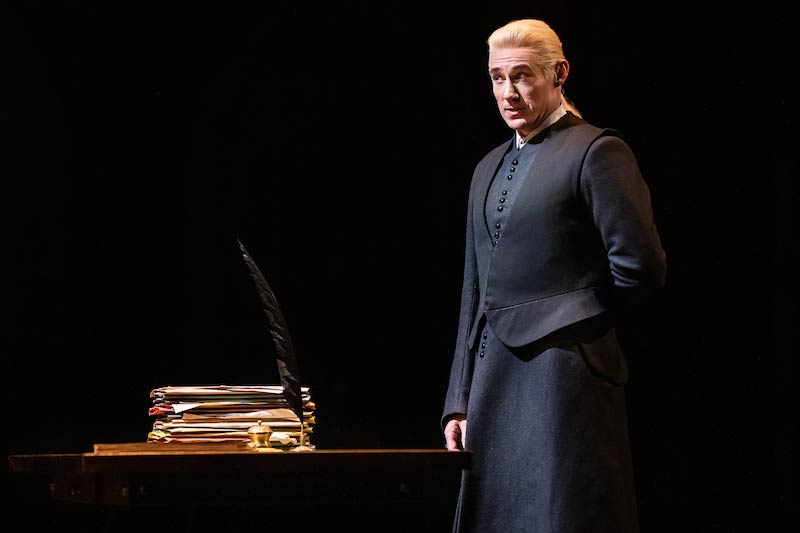 Tom Wren in Harry Potter and the Cursed Child. Photograph © Matt Murphy
Tom Wren in Harry Potter and the Cursed Child. Photograph © Matt Murphy
Harry Potter and the Cursed Child sweeps you up in its world and keeps you mesmerised throughout. You laugh, you hold your breath, you are shocked, and tears gather at the end. At times, fans in the audience gasped or called out in surprise. Harry Potter fans will naturally get the most out of it, but people I spoke to who knew nothing about the Potter-verse also loved it. Muggles know a magical piece of storytelling when they see it, and tickets are disappearing fast. Book now!
Harry Potter and the Cursed Child Parts One and Two are now playing at the Princess Theatre, Melbourne











Comments
Log in to join the conversation.